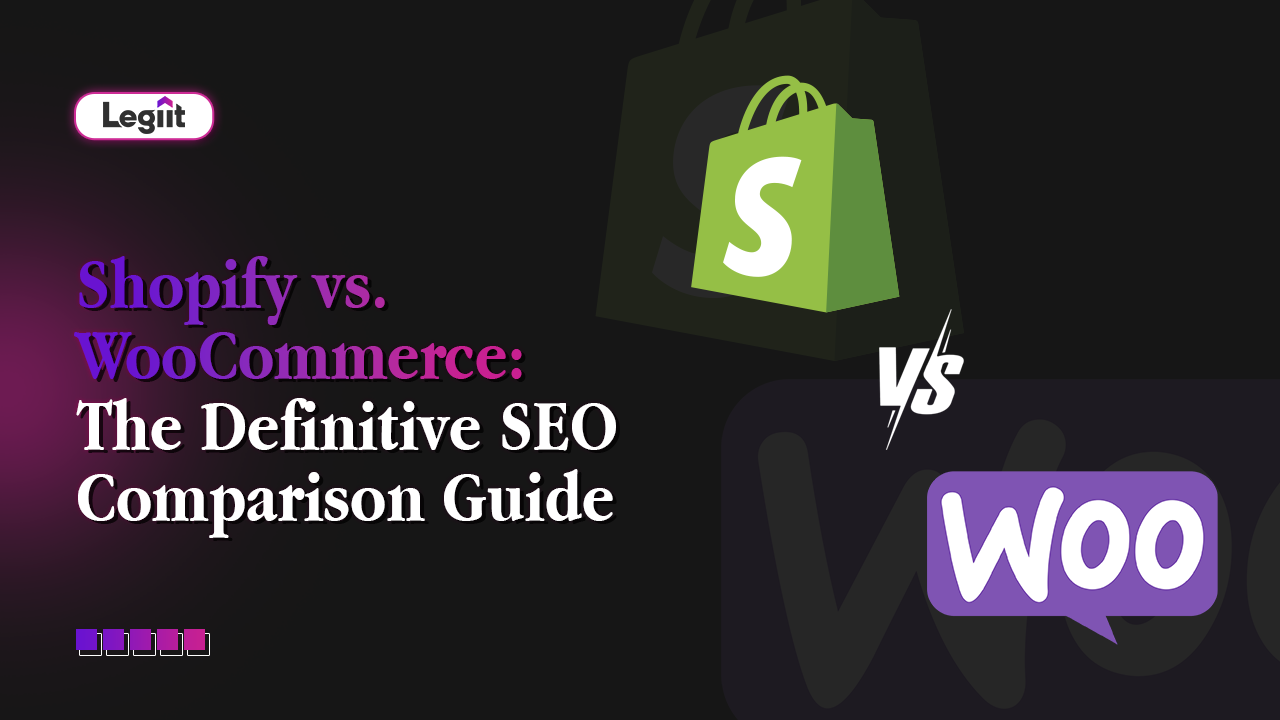Have you ever felt like you're making a lot of compromises as an SEO copywriter just to please Google's algorithm?
If you do, know that you're not alone. It's not that uncommon to see a content writer resort to keyword stuffing and other shady SEO techniques to rank higher in the search results.
But with the implementation of Google's Helpful Content update, the days of manipulating content is coming to a close. Now writing for SEO is all about producing "people-first" content to rank higher on search engine rankings.
In this post, we'll show you how to write content that search engines as well as your readers will love.
Keyword Research and Optimization
In simple terms, keyword research refers to finding the right words or phrases to add to your post so that people find your content online.
Optimizing content by including relevant SEO keywords is one of the easiest ways to rank a page on search engines. That's why content marketing experts will invest in SEO tools like Ahrefs, SEMrush, or KWFinder to determine mainly two things:
# Which keywords have the highest search volume (AKA the terms people search for the most)
# Which keywords have the lowest keyword difficulty (AKA the least competitive keywords)
But is finding the right keyword phrases as easy as it sounds? Or is there more to it than that?
Here's what you need to know about researching target keywords for SEO content writing.
Perform Keyword Research
Using an SEO tool such as the ones we mentioned earlier would probably be the easiest way to find keywords.
Which keyword research tools look and feel different, they all pretty much work the same way. You'll be asked to enter a "seed term" which is a word or phrase that covers what your landing page or content is about. From there, the tool will give you a list of related terms along with key metrics.

You'll want to pay close attention to the metrics. To be more specific, you'll want to look at search volume and keyword difficulty. Search volume represents how many times search engine users looked up a keyword while keyword difficulty refers to how competitive the keyword is.
A good SEO content writer will find keywords with high search volume and low keyword difficulty. But that could be difficult especially if you're in a competitive industry. In this case, you should strike the right balance between these two metrics.
Research Competitor Keywords
If you're starting completely from scratch and have no idea where to begin, then you can try researching keywords that your competitors are using.
While you shouldn't copy the content of your competitors, it is fine to look at the keywords they're targeting and use them in your own posts.
Most keyword research tools have a feature that will let you enter your competitor's URL. Doing so will allow the tool to show you which terms are helping them rank in search engines alongside other keyword information that you might need.
Determine Keyword Intent
There is an intent behind every keyword. And as a digital marketing expert, you'll want to know why people are using your target keywords. Why? Because knowing the intent will allow you to write content that will meet your readers' expectations.
If your content can address a user's needs, it will rank higher on search engines.
What are the types of keyword intent?
# Informational — These are queries where the user wants to learn about a topic. For example, a query like "What are the advantages of having car insurance?" is informational in nature.
# Navigational — These are keywords that are designed to bring a user to a specific site. If a user types in "Nike", for example, then the user probably wants to go to the official Nike website.
# Commercial — These keywords are used by people to prepare for a purchase. For example, a query like "latest iPhone review" might indicate that the user is preparing to buy a smartphone sometime soon.
# Transactional — These keywords are used when someone's ready to make a purchase. For example, a keyword like "camera for sale" will tell you that the user is already going to complete an action. In short, there's a buyer's intent.
Target Multiple Keywords in a Single Post
Is it okay to target more than one keyword per post? Yes, it is. Content marketing experts will even advise you to do it — within reason, of course.
You'll want to make sure that the keywords you're targeting are related to one another. You also want to find ways to add these terms organically into the post. And you'll want to limit your primary keywords to one or two. Any additional keywords you're adding should only be there to support the primary ones.
But how will you know which keywords go well together?
Keyword research tools will suggest complementary words and phrases you can add to your blog post or web page.
Your main keywords should be added to the title and metadata (meta title and meta description). Then smaller, related keywords (sometimes referred to as long-tail keywords) can be sprinkled throughout a post.
Some keyword research tools will also provide LSI (latent semantic indexing) keywords. These are words and phrases that might not be directly related to your primary keyword but provide additional context. That's why you should add LSI keywords if possible.
For example, the primary keyword "Apple" might be too vague for search engines if used by itself. Adding LSI keywords like "tablet", "smartphone", and "computer" will let search engines know that you're referring to the tech company and not the fruit.
Content Research and Preparation
Once you have your keywords, you can move on to content research and preparation.
SEO copywriting goes beyond topic research. You'll have to look at Google search results and see who your competitors are. If your goal is to outrank them in the search results, then you'll need to figure out what they're doing right.
If you're in the camping niche, here's a glimpse of who your competitors might be.

From there you should be able to come up with a strong outline.
Analyze Top-Ranking Pages for Your Keywords
Do a Google search using your primary keyword and see which articles appear in the top ten organic results. These would be your main competitors for the keyword. Alternatively, some SEO tools can provide you with a list of competitors based on a target keyword.
Why do you need to look at competing posts and articles?
There are several reasons including:
# Positioning — By looking at your competitors, you'll have a better idea of how to position yourself to your target audience. You'll know what type of content your shared audience is looking for.
# Relevance — You can look at what your competitors are writing and see what information they are missing. You can also look at the topic from another angle if all your competitors are taking the same stance on an issue.
# Messaging — Reading what your competitors have written will let you know what tone works best with your audience. Some audiences prefer a more serious tone while others like something friendlier.
You can also use an SEO tool to look at some key metrics. Seeing the average visit duration will let you know which competing articles manage to engage users.
There are tools that allow you to filter competitors by location if you're targeting a local market.
And if you're unsure of what types of articles will work in your niche, you can use a tool like BuzzSumo to see trending articles on the web and social media.
Build an Outline
Building an outline is important because it guarantees content structure.
A great content outline will improve your SEO writing by making sure you hit all of your talking points in the right order. An outline also helps keep articles flowing more smoothly.
So how does someone who's writing content create an outline?
You start by jotting down all of your headings. When writing articles, you should place your primary keywords in the title tags and other keywords within subheadings. Your headings should also have a logical flow.
Nesting related subtopics together using subheadings is always a good idea. For example, a Heading 2 can have multiple Heading 3 elements if necessary. Heading 3 elements can also have Heading 4 elements and so on.
Continue polishing your outline until you're satisfied that you've covered all subtopics.
Here are some other things you'll want to keep in mind when drafting your outline.
# Introductions — When writing introductions, make sure that you emphasize who your article is for and why your audience should care. Talk about some of the pain points they may have to make yourself more relatable. Finally, make sure you clarify what your audience will get out of reading your post.
# Conclusions — Conclusions should summarize all the points you've laid out in your post. You can also use this section to let readers know what you want them to do next. If you have a call-to-action, this would be the right place to put it.
# Data — You should consider adding data to back up all of your claims. Add whatever data you're adding under the appropriate heading so you don't forget. And make sure you link to your source to be more transparent with your readers.
Determine NLP Terms of Your Keyword
NLP stands for natural language processing. It's a relatively recent technology that allows Google to understand the meaning behind a query. That means the search engine no longer relies on keywords alone. It takes into account what users are trying to achieve.
With NLP, Google can now understand conversational search queries. That means NLP can impact voice searches.
There are tools that can help you find NLP terms that you can use in your SEO content strategy. Surfer SEO is an example. It will automatically produce NLP keywords that it thinks you should add to your post. It will then keep track of your progress and give you real-time data on whether you've added enough NLP keywords or not.
You might also want to invest in grammar and spelling tools. If your post is filled with grammatical errors, it may impact how Google's NLP might interpret your content incorrectly.
Writing Process and Workflow
Once you have your target keywords and outline, it becomes a whole lot easier to start the writing process.
So what do you need to know about the SEO content writing process?
Here are a few tips that will help you get started.
Observe Proper Formatting
As mentioned earlier, headers are very important in SEO. Not only can they contain keywords that search engines can use to rank your page higher in the results pages but also give your post some much-needed structure.
So how do you optimize headers in an article?
# Hierarchy — Keep in mind that Heading 1 (H1) carries the most weight. Treat the H1 as your title tag. There should only be one H1. All headings marked as H2 represent H1 subtopics. And all headings marked as H3 represent H2 subtopics and so on.
# Keywords — You should include keywords in your headings. However, you shouldn't force keywords into place. Otherwise, your headings will look awkwardly put together. You also run the risk of making your subheadings too wordy which isn't a good thing.
# Sections — Headers are a great way to section off text blocks that have gone on for way too long. If a section has too many paragraphs, consider adding a heading to make your post easier to read.
Add Visual Content
There are plenty of reasons why you'd want to add visual content to a post. For one thing, these elements help break up your content which makes it easier for readers to make it to the end.
Visual aids also provide additional information that could be hard to convey through text alone. You can stir up a reader's emotion by adding the right image to a post.
Images are also good for SEO because search engines can pull images from web pages and make them part of the search engine results.
What type of images can you add to a post?

Aside from regular images, you can also add:
# Infographics — These are image files that summarize topics to make them more digestible for readers.
# Screenshots — Add screenshots if you want to walk readers through a complicated process or to represent a web page.
# Videos — You can embed videos that can help drive your point more effectively than text.
# Quotes — Instead of using quotation marks, you can use images with the quote that you want to highlight instead.
# GIFs — GIFs are the middle ground between images and videos.
# Memes — Memes can lighten up a serious conversation if needed. Consider using memes if you want to keep things lighthearted.
But what if you don't have graphic design skills? How can you generate visuals for your post?
You can use a tool like Canva to create custom visuals for any type of post. You don't need to know anything about graphic design for these to create assets for your content. And you can use it for free.
Edit Voraciously
An SEO copywriter knows the value of working with a good editor. If you have access to one, you should have an editor check your work not only for typographical errors but for factual errors as well.
But the reality is that most SEO copywriting tasks are done by one person. And if you belong in that group, then you'll need to learn how to edit your document yourself.
The good news is that there is a tool called Grammarly Premium that makes the whole process simpler. Not only that, Grammarly can make edit suggestions as you're writing the post. You can try Grammarly for free.
Use Tools That Help Make The Process Much Easier
If you can't tell by now, we're huge fans of SEO and productivity tools. So far, we've mentioned Surfer SEO, Canva, and Grammarly.

Surfer SEO, in particular, has a scoring system that helps you see how optimized your post is in real-time. That makes it one of the best tools for an SEO copywriter.
There are many other tools out there that can help you achieve your goals as a content writer. Some even help automate the marketing process. We highly suggest that you seek out all your options so you can find the right tool for you.
But as difficult as it is to become a content marketing expert without the help of tools, remember that SEO tools are only as the writer using them. Even if you have access to every SEO tool, you're still the one in control. Tools are only there to help refine the writing process and not take over for you.
What if SEO tools are just not cutting it? What if you need more help than you realized?
If that's the case, you should highly consider hiring SEO content writers.
SEO Content Writers for Hire
Let's admit it: Not everyone's born to be a writer. And if you're running a business (especially if you're a startup), then you probably have other things you'd rather focus on than generating content for your web pages.
If that is the case, then you're better off hiring freelance writers to do the work for you. Most freelance writers have the experience needed to engage with your target audience. They're also great at doing research. Some even have enough graphic design skills to create images for your post (you may need to pay extra though).
Freelance SEO writers are not only good at content creation but they're also proficient at keyword optimization, social media marketing, and content promotion in general.
And the best part is that there are plenty of places where you can hire freelance writers.
But not just any place should do. You need a platform that can help you verify the credentials of every candidate. That's where Legiit comes in.

Legiit is an online marketplace where freelancers (including SEO copywriters) can offer their services. Potential employers can see how much services cost so there are no more awkward conversions about asking rates.
Freelancers are also rated by their previous clients. So you'll see right away which freelancers are best suited for the task at hand.

Some freelancers are better at specific writing tasks. So we encourage potential clients to use the filtering system to find the right candidate for their niche. For example, some freelance writers are more suited for copywriting while others are more proficient at blog posting.
Here's another tip:
If you're comfortable writing content for your site but not editing your own work, you can use Legiit to hire a freelance editor.

And if you think hiring a freelance writer is expensive, it's actually not.
You can hire a freelance writer or editor for as low as $5 per project. But the more complicated a project is, the higher costs will become.
So if you need a helping hand, we highly suggest that you hire a freelance writer to create and optimize posts for search engine algorithms. You'll get more organic traffic as a result.
Conclusion
Search engine optimization for writers can be tricky but not impossible. If you have the knowledge, you can write content that both your readers and Google (other search engines too) will love.
When writing web content, remember the following:
# Keyword Research — Find the right keywords to use for your post. As an SEO writer, you'll need access to keyword research tools to make the job less complicated. You can use keyword data from competitors as a jumping point.
# Content Research — See what type of content is working for your competitors. From there, you can build an outline that would fill in informational gaps that your competitors failed to address.
# Use Proper Formatting — How you structure your content will have an impact on how readers see your post. Make sure you put subheadings in a sensible order.
# Find Tools to Help You — There are plenty of SEO tools out there that can simplify the writing process. Don't be afraid to use them. While some tools can be expensive, you'll find free versions and apps if you look hard enough.
And remember, you don't have to do everything alone. If you need help, hire a freelancer on Legiit.













 Download
Download